Underdog No More, a Deaf Football Team Takes California by Storm November 15, 2021

RIVERSIDE, Calif — The athletic program at the California School for the Deaf, Riverside, has suffered its share of humiliations and harassment over the years. There was the time that a visiting team’s volleyball coach mocked the deaf players. And another time a hearing coach for the girls basketball team listened as opponents discussed how embarrassing it would be to lose to a deaf team.
It did not help morale that the varsity football team, the Cubs, recently suffered seven straight losing seasons, leaving the school with the sinking feeling that opposing football teams came to the Riverside campus expecting an easy win.
On Friday night, the second round of the playoffs, the Cubs trounced the Desert Christian Knights, 84-12, a score that would have been even more lopsided had the Cubs not shown mercy by putting their second-string players in for the entire second half.
Led by the school’s physical education teacher, Keith Adams, a burly and effervescent deaf man whose two deaf sons are also on the team, the Cubs are a fast and hard-hitting squad. Wing-footed wide receivers fly past defenses, averaging 17 yards per catch. The quarterback doubles as the team’s leading rusher, with 22 touchdowns on the season. A system of coded hand signals among tight-knit teammates and coaches confounds opponents with its speed and efficiency.
With Friday’s win, the Cubs are two games away from capturing the division championship for the first time in the school’s 68-year history. But coaches and players say they already feel like winners.
“I sometimes still can’t believe how well we played this year,” Mr. Adams said after the win on Friday. “I knew we were good, but never in my dreams did I think we would dominate every game.”
In a part of California that suffered greatly during the pandemic with high unemployment and more than 5,000 dead, the Cubs’ excellence has lifted the school and the surrounding community.
Football is a richly audible experience: the crashing of helmets, the crunch of a tackle, teammates shouting from the sidelines and the roaring approval of the crowd. Friday night games at the Riverside campus are not totally silent, but they are not boisterous either. The generators that power the lights hum and the crowd reacts with scattered claps. But there is no public address system, no play-by-play commentator to call out player’s names after a touchdown pass or run-stuffing tackle.
The American flag flies near the field, but there is no national anthem before the game. A sign-language interpreter hired by the school serves as an intermediary between the Cubs’ coaching staff and the game officials. Before the game on Friday, the interpreter reminded the officials to wave their hands when they blew whistles to stop a play.
For the coaching staff, the success of the team has undermined the longstanding stereotype that deafness is something to overcome in football.
Mr. Adams, who coached the team for two seasons starting in 2005 and began his second stint four years ago, attributes the turnaround to rigorous conditioning and an especially talented cohort of players, some of whom have played together for years at lower levels.
He also has a philosophy that what might be thought of as a deficit can be an edge.
Many teams try to use hand signals to call in plays, but they are no match for the Cubs, who communicate with a flurry of hand movements between each play. No time is wasted by players running to the sidelines to get an earful from the coaching staff. No huddle is needed.
The coaches also say deaf players have heightened visual senses that make them more alert to movement. And because they are so visual, deaf players have a more acute sense of where their opponents are positioned on the field.
After being defeated on Friday, Aaron Williams, coach of Desert Christian, said he had a warning for future opponents of the California School for the Deaf, Riverside.
“I would say be careful in thinking that you have an advantage,” he said. “They communicate better than any team I have ever coached against.”
For players, parents and staff, the success of the football team has been more than just an athletic triumph. Many describe it as a sign that deaf children can be at their best when they are together in an all-deaf environment.
Delia Gonzales, mother of Felix, a junior and one of the team’s wide receivers, beamed on the sideline on Friday as her son scored two touchdowns.
She recounted how Felix had pleaded with her to play football at age 10 but then fell into despair when surrounded by hearing players whom he could not understand.
“The coach would just talk at him,” Ms. Gonzales said. “He would come home crying.”
Many players and staff use the word loneliness to describe how they felt in mainstream settings, surrounded by people yet isolated. And teachers and parents recount how students blossomed in an all-deaf environment.
“Absolutely, this has changed his life,” Ms. Gonzales said of her son. “Now he is one of the stars.”
With just 168 students at the high school — the institution runs from preschool through the 12th grade — the Cubs play in an eight-player league designed for smaller schools, often those in rural areas or private institutions. Other eight-player schools include the prestigious Cate and Thacher schools of Southern California. There is only one other deaf high school in the state, and it doesn’t play in the same division.
With their string of wins, the Cubs are starting to get noticed. Players and coaches were featured in pregame ceremonies at the Los Angeles Chargers-Minnesota Vikings game on Sunday and were introduced on the Jumbotron to a packed, cheering stadium.
The school’s 63-acre campus, once surrounded by orange groves, today is framed by strip malls, freeways and fast-food restaurants, and is the only all-deaf public school serving the southern half of the state.
The football team’s success has energized the campus and spawned impromptu alumni reunions at games.
“This has been a long time coming,” said Patricia Davis, one of the school’s first 56 students when it opened in 1953.
“We’ve been a losing team for so long,” she said at Friday’s game, surrounded by exuberant fellow graduates. “I’m just thrilled.”
With a dirt track around the field, fragments of bleachers that look as if they were salvaged from a demolished stadium, a blurry scoreboard and a bumpy grass playing surface, the school has all the requisites of an underdog team. The field is dimly lit with portable floodlights, each with its own exhaust-spewing generator, the kind of equipment that might be deployed by a night construction crew repaving an interstate.
Winning has made those conditions more bearable this season. On Friday, players sat in their locker room on benches facing their coaches for the pregame pep talk.
“You guys have one job and that’s to win,” Esau Zornoza, an assistant coach, exhorted the players in sign language. Clad in their cardinal-red jerseys, 21 players lined up at the door and slapped the corridor walls as they filed into the warm Southern California evening.
Trevin Adams, the Cubs’ quarterback with long brown hair, said playing with fellow deaf teammates is liberating and has fueled the team’s winning chemistry.
“We can express ourselves completely,” said Trevin, a junior who is Coach Adams’s son. “We can be leaders. We can be assertive.”
When he was younger, Trevin played in a league with hearing people.
“That just felt like a team,” he said.
“This feels more like a brotherhood.”
The post Underdog No More, a Deaf Football Team Takes California by Storm appeared first on New York Times.

 Home
Home
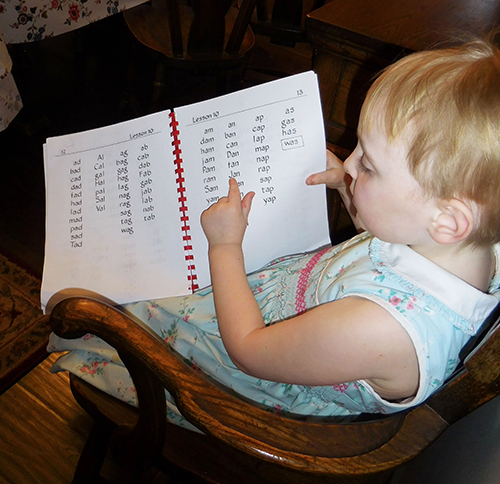




 lessons, directed by a teacher. Spalding writes, “Adults tend to greatly underestimate the mental ability of young children.” The children work hard, and love it, because they’re learning. I’ve seen classes of the least-promising children becoming proficient readers, writers and spellers. Spalding’s program uses no workbooks, and eliminates most special education. Beginners first learn excellent writing skills, then work with the 70 phonograms representing English’s 44 speech sounds, knowing them by sound. The “O” phonogram’s three sounds, for example, are found in “odd”, “open” and “do”; the “O” sound in “open” is that letter’s name, not “long O”. Spelling dictation, from the Ayres List of 1,000 most-used words, uses sentences, and is multisensory: aural (hearing teacher’s voice), tactile (writing), oral (child’s speaking voice), and visual (written word) together. In December, first graders start reading great children’s literature.
lessons, directed by a teacher. Spalding writes, “Adults tend to greatly underestimate the mental ability of young children.” The children work hard, and love it, because they’re learning. I’ve seen classes of the least-promising children becoming proficient readers, writers and spellers. Spalding’s program uses no workbooks, and eliminates most special education. Beginners first learn excellent writing skills, then work with the 70 phonograms representing English’s 44 speech sounds, knowing them by sound. The “O” phonogram’s three sounds, for example, are found in “odd”, “open” and “do”; the “O” sound in “open” is that letter’s name, not “long O”. Spelling dictation, from the Ayres List of 1,000 most-used words, uses sentences, and is multisensory: aural (hearing teacher’s voice), tactile (writing), oral (child’s speaking voice), and visual (written word) together. In December, first graders start reading great children’s literature.
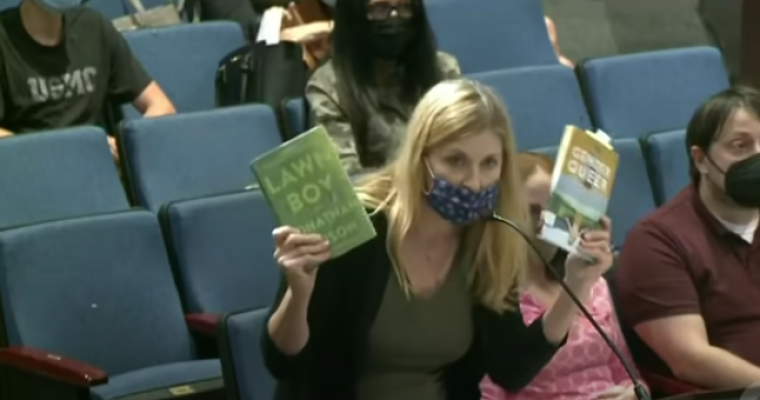
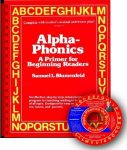

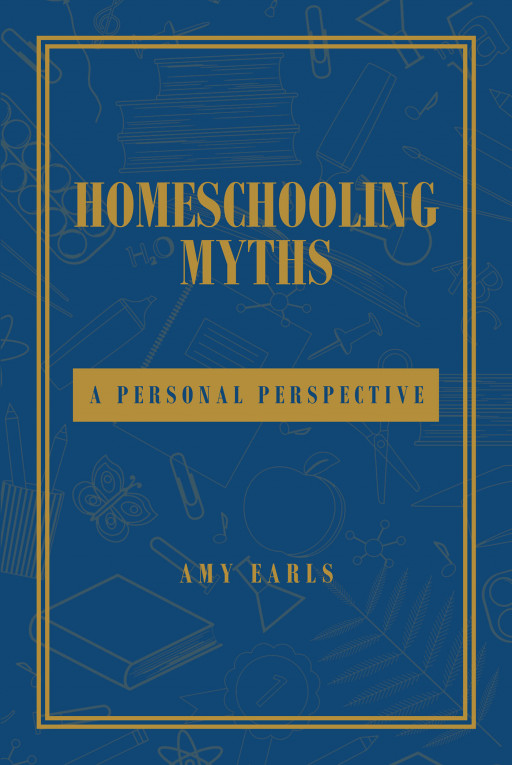



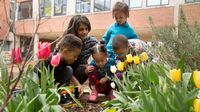






 Alpha-Phonics
Alpha-Phonics The Alphabet Song!
The Alphabet Song! Water on the Floor
Water on the Floor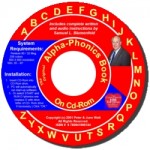 Alpha-Phonics the Book on CD Rom
Alpha-Phonics the Book on CD Rom Blumenfeld Oral Reading Assessment Test
Blumenfeld Oral Reading Assessment Test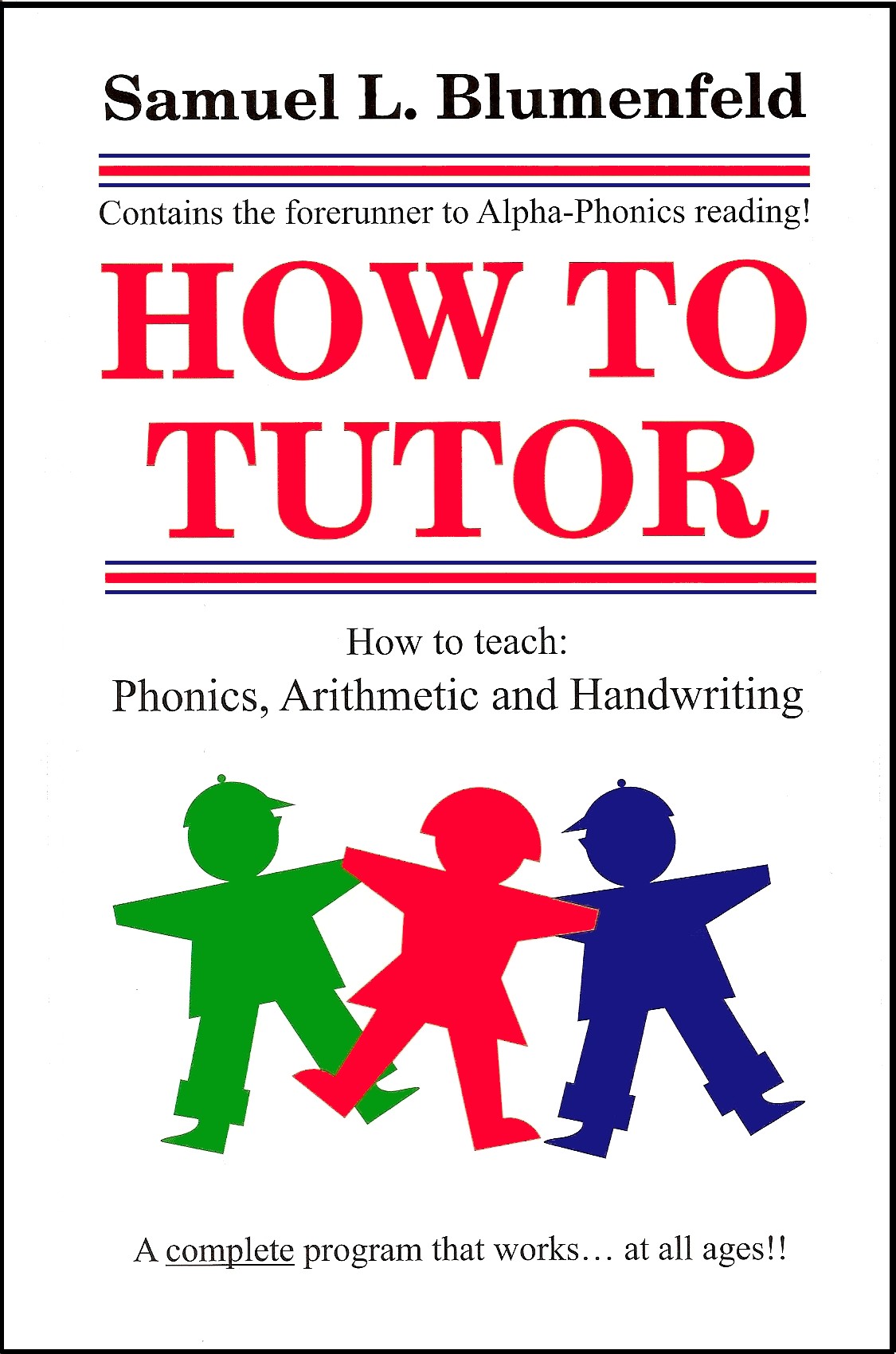 How To Tutor
How To Tutor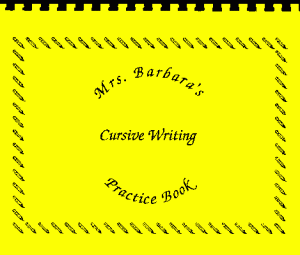 How To Tutor Cursive Handwriting Workbook
How To Tutor Cursive Handwriting Workbook